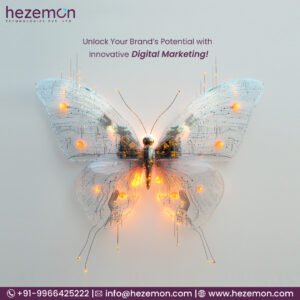In 2025, the lines between branding, digital marketing, and web design are no longer separate. Customers don’t see your branding strategy, your marketing campaign, and your website design as individual efforts—they see them as one unified digital experience. That’s why businesses are now focusing on how to integrate branding and digital marketing in 2025, not as separate functions, but as one powerful growth engine.
The brands that succeed today are those that create seamless customer journeys—where messaging, design, and marketing all speak the same language. Let’s explore how branding, digital marketing, and web design are merging, and how companies can deliver unified digital experiences for customer engagement.

How to Integrate Branding and Digital Marketing in 2025
For years, companies treated branding as visuals and slogans, while digital marketing focused on traffic, clicks, and leads. But in 2025, the most successful businesses know that branding is digital marketing. They work together to build trust, awareness, and conversions.
Here’s how to integrate branding and digital marketing in 2025 effectively:
-
Consistent Storytelling Across Channels
Your brand voice must remain the same on social media, paid ads, email campaigns, and even your customer support chat. Every touchpoint reinforces the brand promise.
-
AI-Driven Personalization
Digital marketing now uses AI to target the right audience, but branding ensures the messaging is authentic. When personalization feels human and true to the brand, customers engage more deeply.
-
Purpose-Driven Campaigns
Buyers want to connect with values. When your branding strategy defines your “why,” your digital marketing campaigns amplify it to the right audience.
By integrating branding and digital marketing, businesses don’t just sell—they create long-lasting customer relationships.
Unified Digital Experiences for Customer Engagement
Today’s buyer journey isn’t linear. A customer might first see your brand on LinkedIn, then visit your website, sign up for an email, and finally buy after watching a video ad. If these experiences feel disconnected, you lose trust. That’s why businesses are prioritizing unified digital experiences for customer engagement.
A unified digital experience means:
- Design + Branding Consistency: Colors, logos, tone, and visuals must look and feel the same everywhere.
- Seamless User Experience: Moving from ad → website → checkout should feel natural, without friction.
- Personalized Journeys: Data from your marketing campaigns should inform website recommendations and follow-up emails.
Companies like HubSpot, Salesforce, and Apple are leading examples of unified digital experiences for customer engagement, showing how powerful consistent branding and marketing can be when tied together with great design.
Merging Web Design and Branding Strategies
Your website is the digital home of your brand. It’s not just a brochure—it’s a 24/7 salesperson, brand ambassador, and marketing engine. That’s why merging web design and branding strategies is critical in 2025.
Here’s how to merge them effectively:
- Design Reflects Identity
Typography, layout, and imagery must represent the brand’s tone. A premium brand won’t use cheap stock photos; a playful brand won’t use corporate gray everywhere.
- Conversion-Focused Branding
Good branding isn’t only about looking good—it must help the business grow. Merging web design and branding strategies means building landing pages that match campaigns, CTAs that reflect the brand promise, and user flows that feel natural.
- Mobile-First + Smart Features
With most traffic coming from mobile, your web design should integrate chatbots, AI recommendations, and interactive features that embody the brand’s personality.
When web design and branding strategies merge, your site doesn’t just inform—it engages, persuades, and converts.
Why the Convergence Matters in 2025
The digital world is crowded. Customers have endless choices. What sets a brand apart isn’t just marketing spend or fancy websites—it’s the ability to deliver a unified experience across branding, marketing, and design.
- Without integration, your branding feels empty.
- Without design alignment, your marketing feels disjointed.
- Without digital marketing, your branding doesn’t scale.
That’s why in 2025, leaders are asking not “how do I improve my website?” or “how do I run better ads?” but how do I integrate branding, marketing, and design into one powerful strategy?

Conclusion
The future of digital growth lies in integration, not separation. Businesses that know how to integrate branding and digital marketing in 2025, while building unified digital experiences for customer engagement, will win. And those who focus on merging web design and branding strategies will create websites that don’t just attract visitors but convert them into loyal customers.
Branding, marketing, and design are no longer three separate teams—they are one strategy, one message, and one digital experience. That’s the future.





